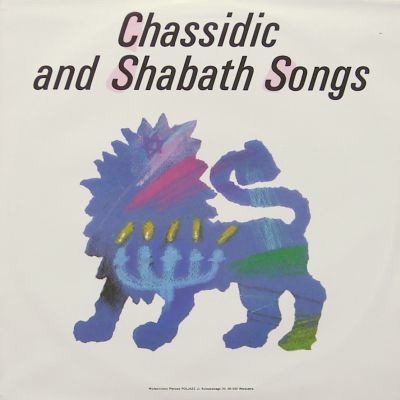The moment of changing the political and economic system of formerly socialistic countries in central Europe, was also the time of turning back and digging for individual and cultural roots. Uncovering the history in private perspective was the process of social awakening. It was also the crucial moment in building the modern identity. And special place was occupied both by remnants of Jewish culture and missing parts of social memory. After two records of Effi Netzer's Hava Nagila and Yaacov Shapiro’s The 18 Pearls of Yiddish Songs, Polish Jazz Federation published under POLJAZZ label next album called Chassidic and Shabath Songs (PSJ 260). Cover design connects these albums but third album is distant in serial number and in time from prior albums. And even if it was only two or three years, this time it could be the real distance.
As it was announced in back cover commentary „this is a unique record”. And it really is. It is hard to find almost any information about recorded artists, time and place of recording, even the year of production of the album. Only information is the name of the producer Dov Zeira and small note about historic background of Chassidism. But most important is listing of 16 songs titles. There are many popular Shabbat songs in simple and easy to sing along arrangements – Hineh Lo Yanum, Yedid Nefesh, Yismechu Hashamaim, Tzam'a Nafshi, Ivdu et Adonai, Mi Ha’Ish, Esa Einai and Od Yishama.
Performers assembled on this album are very close in style and professional level – sometimes it’s hard to see the difference between various artists. Among performers we can hear Ami Shavit (Sisu Ve’Simchu mistakenly noticed on cover as Sissu Yesimchu), Effi Netzer Singers (She’yibane Beit Hamikdash, Sisu Et Yerushalayim, Tzam'a Nafshi) David And The High Spirit (Yismechu Hashamaim, Od Yishama), HaGevatron (Mi Ha’Ish), Batya Segal and Bary Segal (Esa Einai). Vocal arrangements sometimes sung in unison by whole group of singers are intentionally nonprofessional like. But with joyous spirits and festive mood can be the great background for learning of Shabbat Songs.
Performers assembled on this album are very close in style and professional level – sometimes it’s hard to see the difference between various artists. Among performers we can hear Ami Shavit (Sisu Ve’Simchu mistakenly noticed on cover as Sissu Yesimchu), Effi Netzer Singers (She’yibane Beit Hamikdash, Sisu Et Yerushalayim, Tzam'a Nafshi) David And The High Spirit (Yismechu Hashamaim, Od Yishama), HaGevatron (Mi Ha’Ish), Batya Segal and Bary Segal (Esa Einai). Vocal arrangements sometimes sung in unison by whole group of singers are intentionally nonprofessional like. But with joyous spirits and festive mood can be the great background for learning of Shabbat Songs.


No comments:
Post a Comment